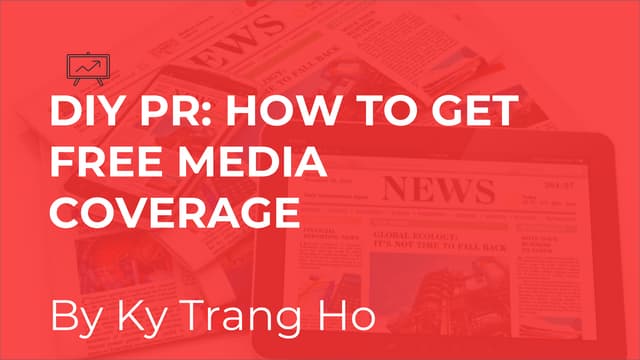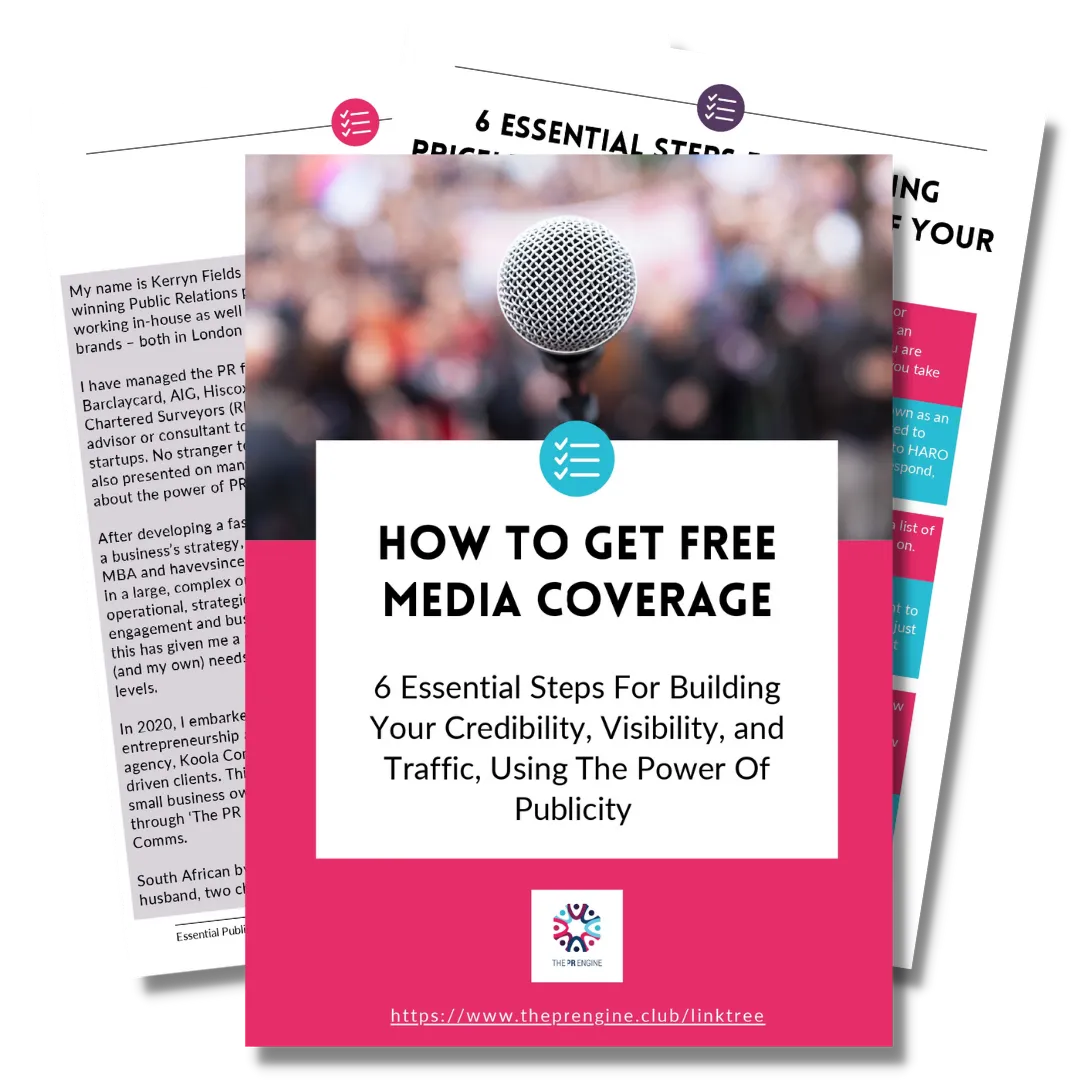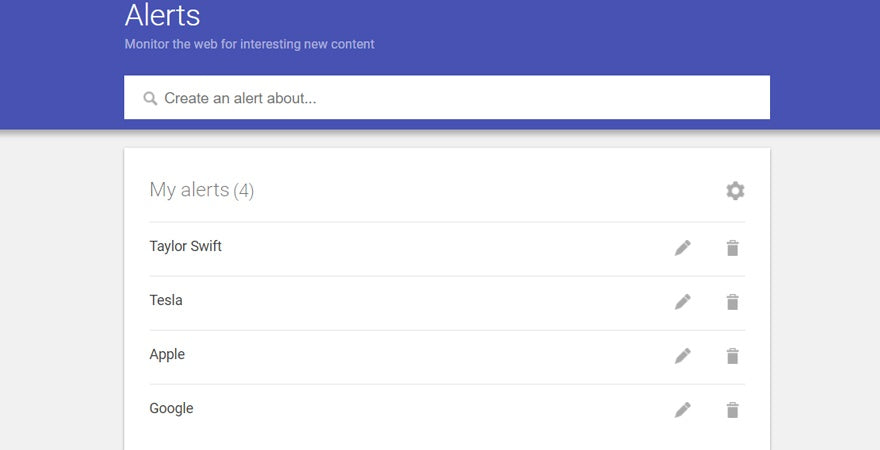How To Get Free Media Coverage

In today’s fiercely competitive landscape, securing media coverage is paramount for businesses, organizations, and individuals aiming to amplify their message, build brand recognition, and reach a wider audience. However, the financial burden of traditional advertising and public relations campaigns often places effective media outreach beyond the reach of many. This article explores strategies for obtaining valuable media coverage without incurring hefty expenses.
This article delves into actionable methods for securing free media coverage, focusing on crafting compelling narratives, building relationships with journalists, leveraging social media effectively, and capitalizing on timely news opportunities. This includes understanding media gatekeepers, tailoring pitches to specific outlets, and providing value to journalists through insightful content and readily available resources. The goal is to provide a comprehensive guide, empowering readers to navigate the media landscape and secure valuable exposure without breaking the bank.
Understanding the Media Landscape
The modern media landscape is diverse, encompassing traditional outlets such as newspapers, magazines, television, and radio, as well as online platforms like news websites, blogs, and social media. Each outlet has its own unique audience, editorial focus, and preferred methods of communication. Understanding these nuances is crucial for crafting effective pitches.
Journalists and editors are constantly bombarded with press releases and story ideas. According to a 2023 study by Cision, public relations professionals estimate that journalists receive an average of 50 pitches per week. Therefore, standing out from the crowd requires a strategic approach and a compelling story.
Crafting a Compelling Narrative
The cornerstone of securing free media coverage is having a story that journalists will find newsworthy and engaging. A compelling narrative typically possesses elements such as timeliness, relevance, human interest, and novelty. Is your story tied to a current event or trend?
Does it offer a unique perspective or solution to a problem? Does it evoke emotion or resonate with a broad audience? These are all key factors that journalists consider when evaluating a story.
Consider framing your story around a specific problem your organization is solving. Data from the Pew Research Center consistently shows that audiences are drawn to stories that highlight solutions to societal challenges. Focus on the impact of your work and the benefits it provides to individuals or the community.
Building Relationships with Journalists
Establishing relationships with journalists is essential for long-term media success. This involves more than just sending out press releases; it requires building genuine connections and providing value to journalists. Start by researching journalists who cover your industry or area of expertise.
Follow them on social media, read their articles, and engage with their work. When you have a story to pitch, personalize your message and explain why it would be relevant to their audience. Offer them exclusive insights, data, or access to sources.
PR Daily emphasizes the importance of being a reliable source of information for journalists. Responding promptly to inquiries, providing accurate information, and respecting their deadlines are all crucial for building trust and fostering a positive relationship.
Leveraging Social Media Effectively
Social media can be a powerful tool for securing media coverage. By actively engaging on platforms like Twitter, LinkedIn, and Facebook, you can connect with journalists, share your story, and build a following. Use social media to amplify your message and reach a wider audience.
Share your own content, such as blog posts, videos, and infographics, and engage with industry influencers. Participate in relevant conversations and use relevant hashtags to increase your visibility. According to HubSpot, companies that actively use social media are more likely to generate leads and attract media attention.
Social media also allows you to track media mentions and engage with journalists who are writing about your industry. By monitoring relevant keywords and hashtags, you can identify opportunities to contribute to the conversation and offer your expertise.
Capitalizing on Timely News Opportunities
Staying informed about current events and identifying opportunities to tie your story to timely news can significantly increase your chances of securing media coverage. This involves monitoring news cycles and looking for ways to connect your work to trending topics. Is there a current event or crisis that your organization can address or offer a solution to?
Can you provide expert commentary or analysis on a relevant issue? By positioning yourself as a thought leader and offering valuable insights, you can attract media attention and build credibility. This is often referred to as newsjacking - strategically inserting your brand's message into a breaking news story.
However, it is crucial to approach newsjacking with sensitivity and avoid exploiting tragedies or crises for promotional purposes. Focus on providing valuable information and contributing to the conversation in a meaningful way.
Providing Value to Journalists
Ultimately, securing free media coverage is about providing value to journalists. This means offering them compelling stories, insightful information, and readily available resources. Make it easy for them to do their job by providing high-quality photos, videos, and data. Be responsive to their inquiries and respect their deadlines.
Forbes highlights the importance of providing journalists with exclusive content or access to sources. This can be a powerful incentive for them to cover your story. Consider offering them an exclusive interview with a key executive or sharing unpublished data or research findings.
Remember, journalists are looking for stories that will inform, engage, and entertain their audience. By providing them with valuable content and making their job easier, you can significantly increase your chances of securing free media coverage.
Conclusion
Securing free media coverage requires a strategic approach, a compelling narrative, and a commitment to building relationships with journalists. By understanding the media landscape, crafting engaging stories, and providing value to journalists, organizations and individuals can effectively amplify their message and reach a wider audience without incurring significant costs. Building a strong online presence through social media and capitalizing on timely news opportunities further enhances the chances of media success.
While it may require time and effort, the return on investment from earned media coverage can be substantial, leading to increased brand awareness, enhanced credibility, and ultimately, a stronger bottom line. Persistence and a proactive approach are key to long-term success in the competitive world of media relations.


















